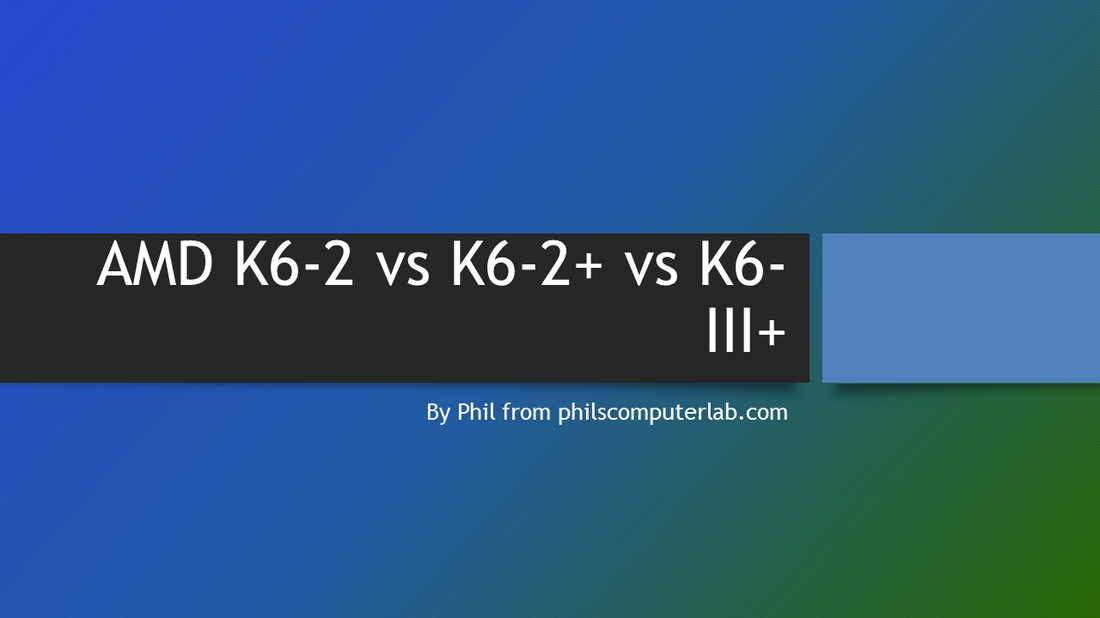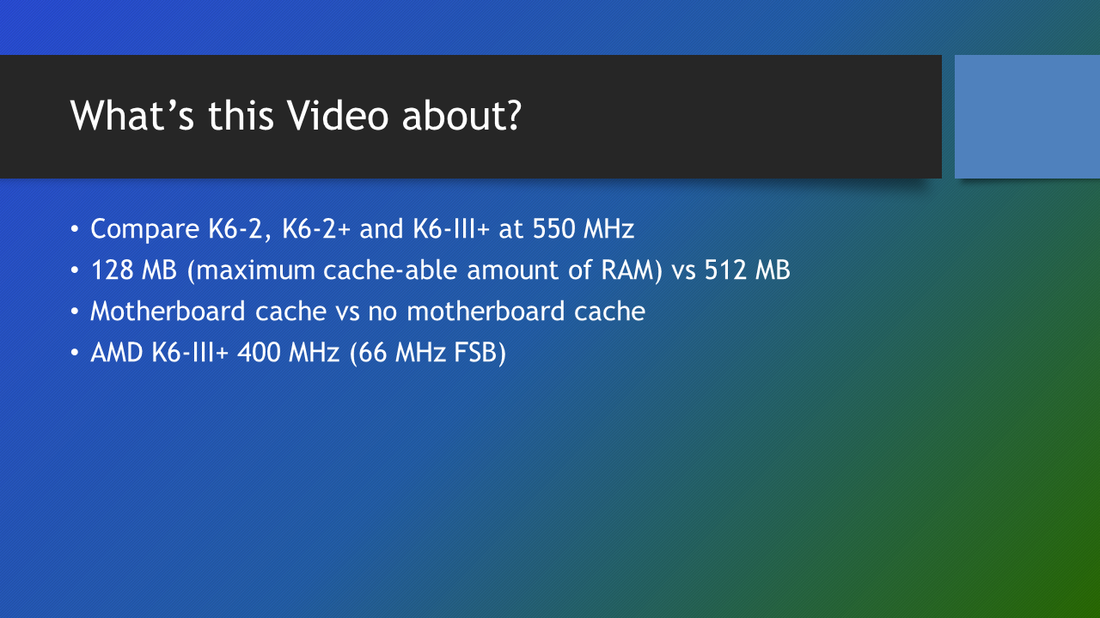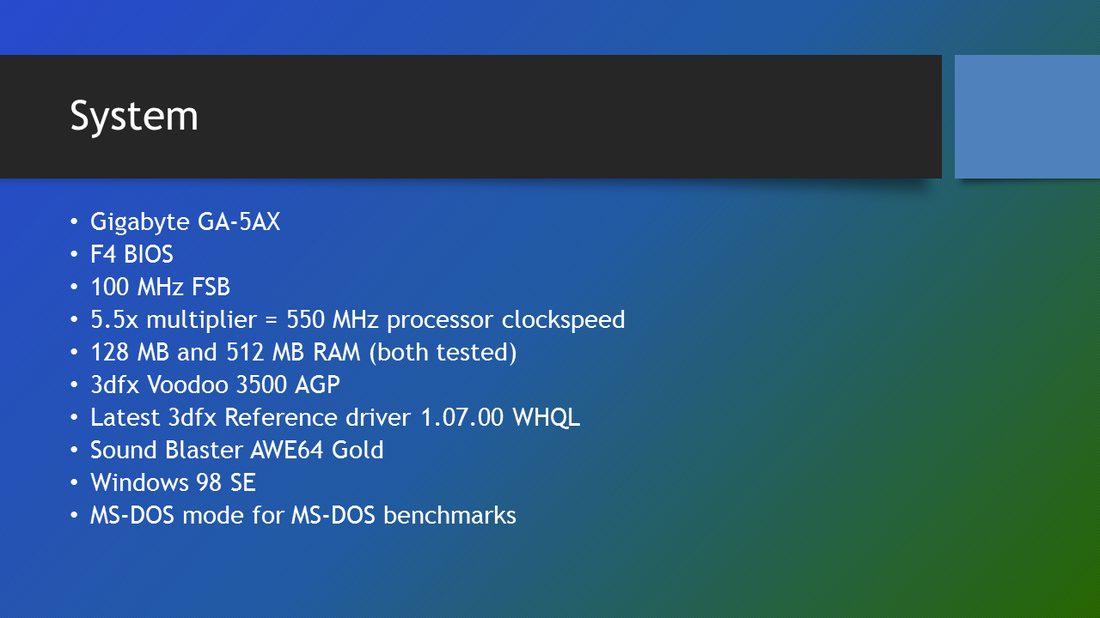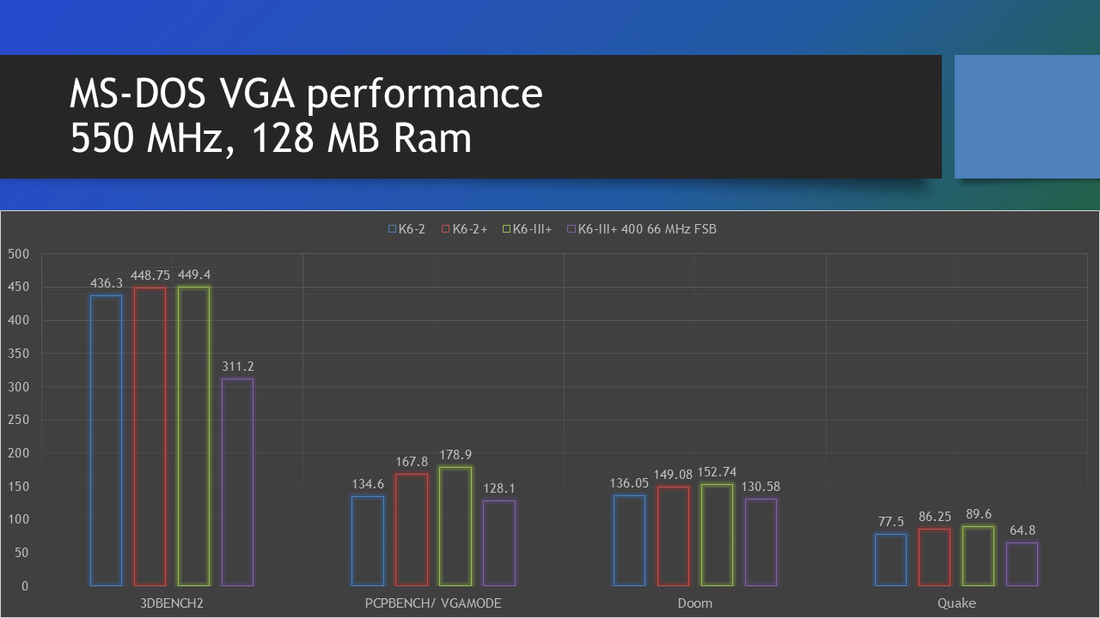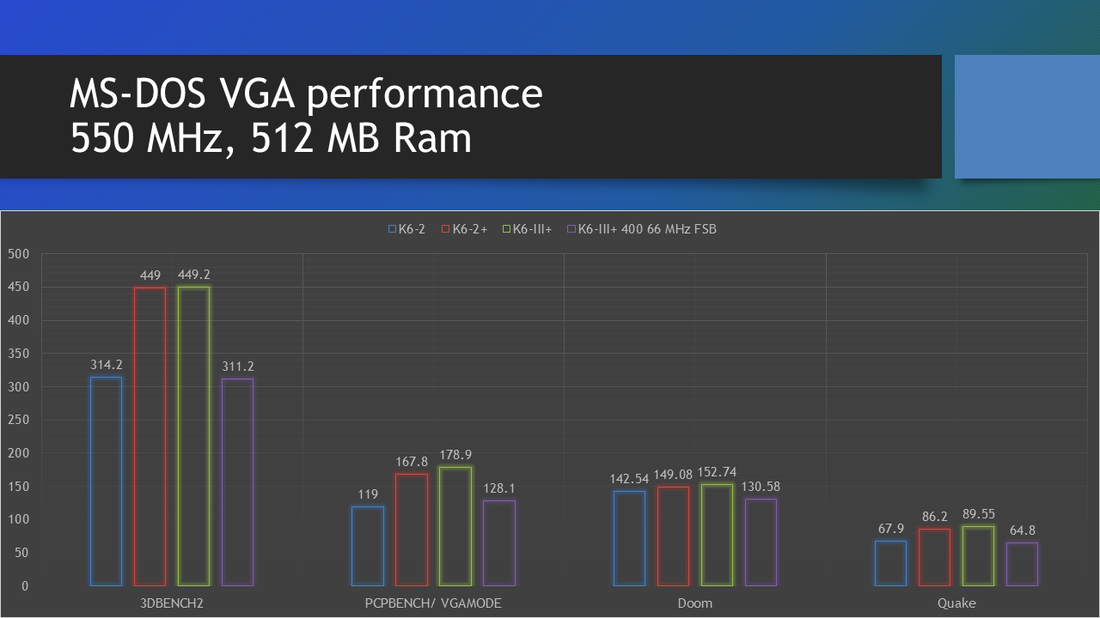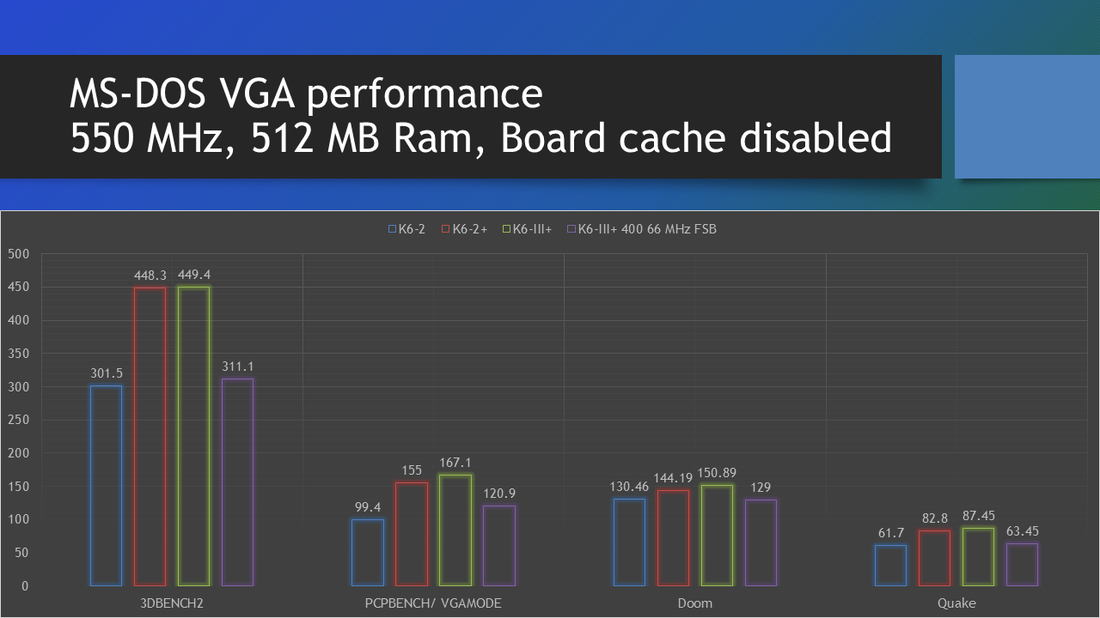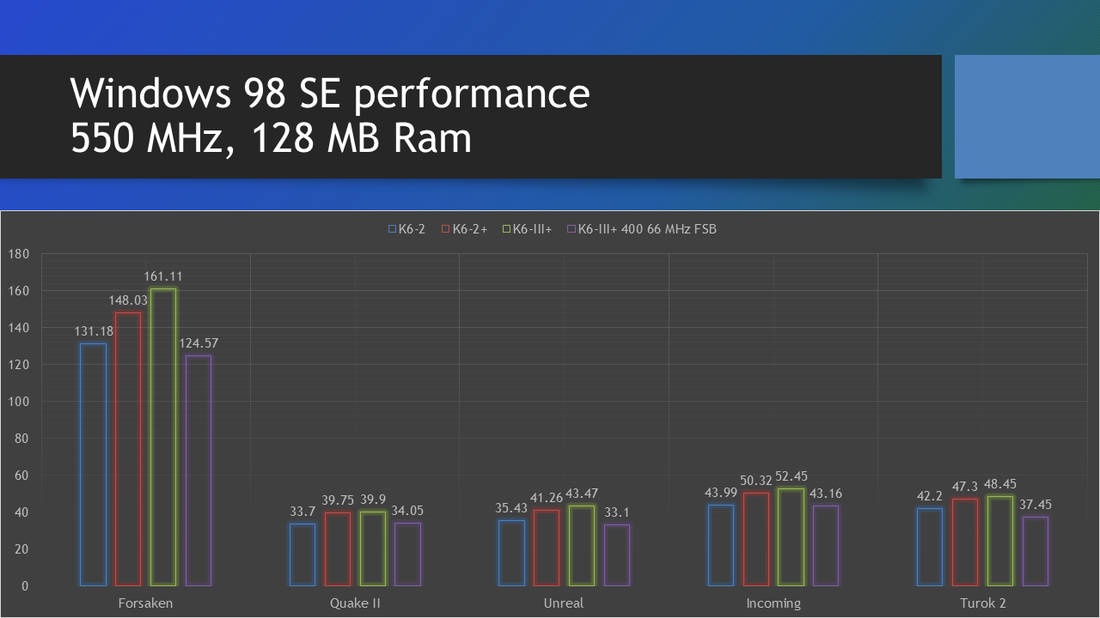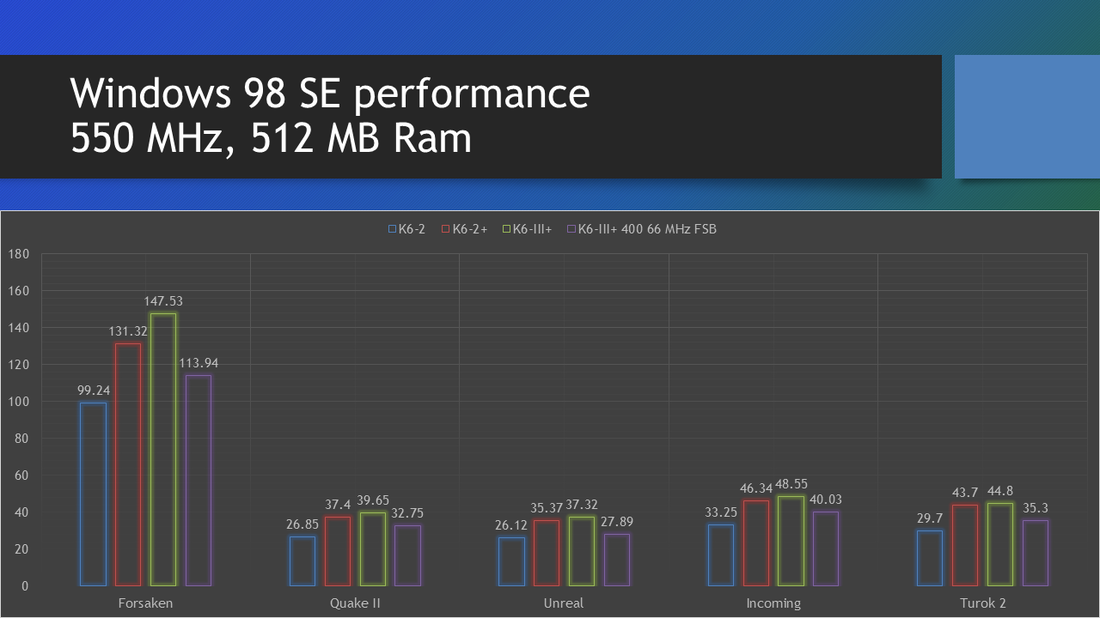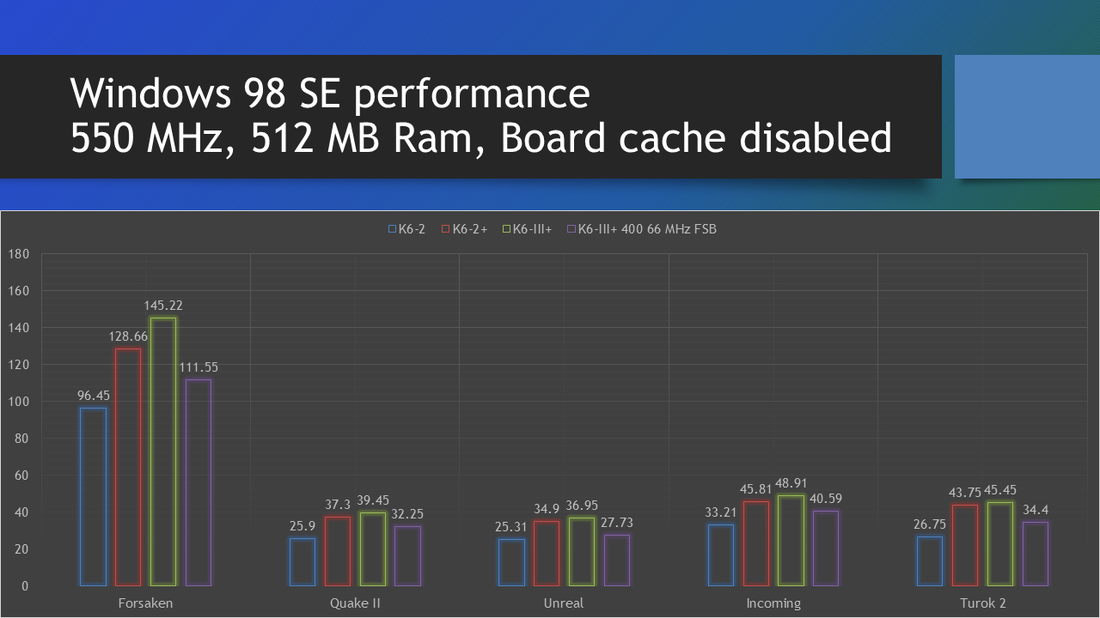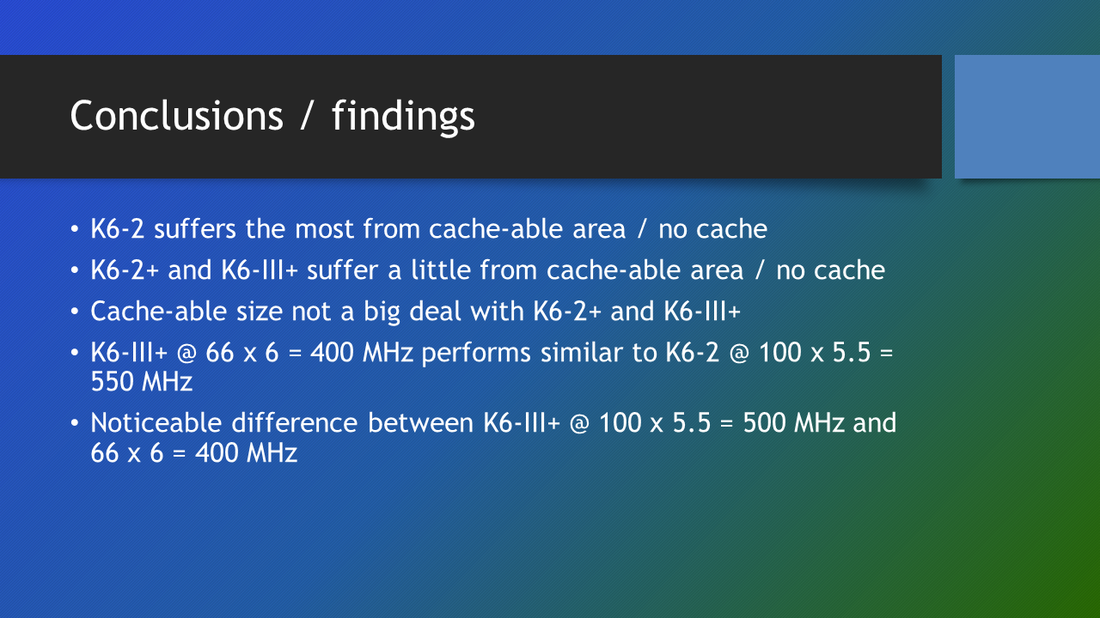AMD K6-2 vs K6-2+ vs K6-III+
|
AMD is a popular choice when it comes to building a Socket 7 or Super Soket 7 Retro Gaming PC. Intel moved on from Socket 7 with the Intel Pentium MMX 233 MHz being Intel's fastest Socket 7 processor. AMD continued supporting the platform and got industry support for 100 MHz front side bus (Super Socket 7). AMD offered a wide range of processor for desktop and notebooks.
Especially interesting are the K6-2+ and K6-III+ mobile processors. They are build on a smaller manufacturing process and therefore run on lower voltage, consuming less power and clocking higher. Many chips are able to reach 600 MHz through overclocking. Both chips also introduced on-chip Cache with the K6-2+ featuring 128 KB and the K6-III+ 256 KB on-chip cache. Super Socket 7 motherboards have motherboard cache. There is however a limit as to the amount of cache-able RAM. Most motherboards can cache up to 128 MB of RAM, any additional RAM won't be cached and performance suffers. Refer to your motherboard documentation to confirm the cache-able amount of RAM that your motherboard supports. On this page I document a project I worked on with the goal of measuring the differences between these chips, the impact of RAM size (128 MB vs 512 MB) and cache-able memory. A mix of games running on MS-DOS as well as Windows 98 SE include:
|
Raw benchmark data
| amd_k6-2_vs_k6-2_vs_k6-iii_raw_data.pdf |
